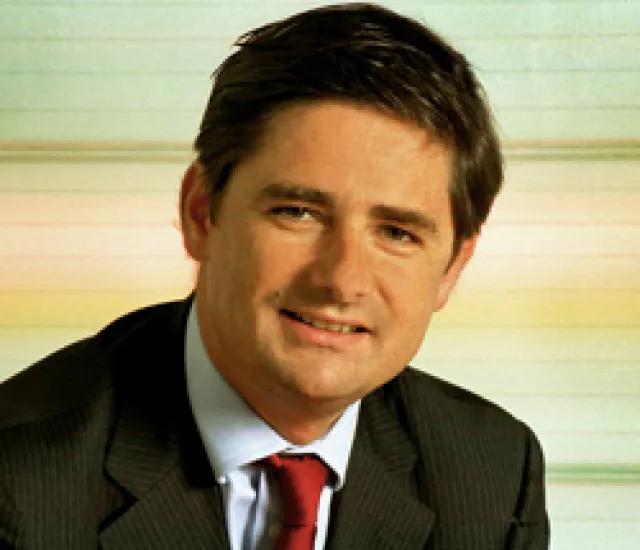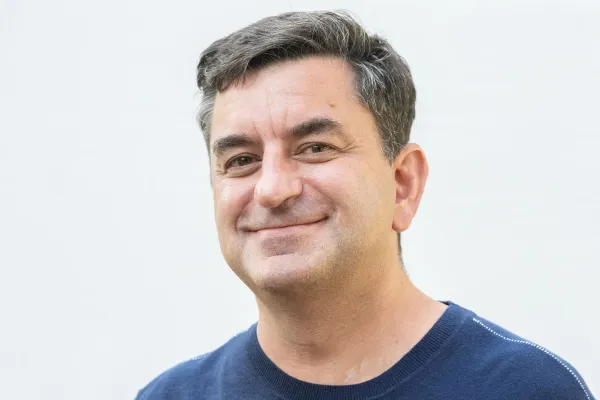What a difference a year makes. As 2010 commenced, executives at Paris-France-based Capgemini were looking at a decline in business, with little promise of a rebound in sight. Revenue at the global provider of information technology services was down 6.9 percent at the end of the first quarter, at €2.052 billion. The company’s CFO Nicolas Dufourcq reluctantly gave guidance of -2 percent to -4 percent for the year.
[See the 2011 All-Europe Executive Team rankings of the region's top CEOs, CFOs and Investor Relations professionals and companies].
But as stories often do, this one has a happy ending. As markets stabilized throughout the year, and customers slowly returned, so did Capgemini’s revenue. Capgemini reported revenue for the year 2010 of €8.697 billion, an increase of 3.9 percent over the previous year. Profits at the firm also soared, finishing the year up 57.3 percent at €280 million, from €178 million year-end 2009.
In response to the global recession touched off in 2008, Capgemini’s customers had pulled back on spending. The result was a decline in business volumes for the IT consultant. Figuring out how to appropriately respond to the situation was not completely evident for Dufourcq, whose title has since changed to deputy general manager in charge of group finance, delivery, IT and procurement. “It was not easy to forecast the evolution of market demand and steer business accordingly,” he notes.
The firm did increase its utilization ratio and reduce costs in order to adapt to declining volumes. “There was a plateau in the crisis in the first quarter of 2010, then the pressures started on prices, which typically happens one year after an economic downturn,” says Dufourcq. “Everyone tried to sell their resources.”
By the second quarter, Capgemini’s business did slowly pick up, accelerating for the rest of the year. The result was a rise in revenue of 16.2 percent for the fourth quarter, 2010 — a welcomed surprise for both the executive team and investors. “We beat the crisis and all our guidance in 2010, generating very good cash that allowed us to post very significant cash options at the end of year,” says Dufourcq. “It turned around swiftly, and we finished the year with significant growth. There was real momentum,” he says.
Dufourcq’s ability to stay the course during the lean times, while continuing to focus on growing the company, impressed both buy- and sell-side analysts who voted Dufourcq Best CFO in the Technology/Software sector on Institutional Investors 2011 All-Europe Executive Team ranking of the region's top executives. Buy- and sell-side analysts also named Manuel Chaves d’Oliveira, Capgemini’s head of investor relations as Best Investor Relations Professional in the sector.
In line with the Capgemini’s stellar 2010 turnaround in profits, the Board of Directors has recommended a dividend payment of €1 per share, a sizable increase over last years €0.80 dividend, to be voted on at the next shareholders’ meeting, which will be held in Paris, on May 26, 2011.
With an eye on growth, and a push by Capgemini executives to increase the company’s exposure to the emerging markets, the team continued to look for acquisition possibilities throughout the year. That opportunity came in the form of Sao Paulo-based CPM Braxis, the biggest IT services company in Brazil. Capgemini acquired a 55 percent stake in the firm for 517 million Brazilian reals or €233 million, in an all cash deal that closed on September 2, 2010.
Capgemini had been looking for a way to boost its presence in Brazil, where it already had a small presence with 700 employees — a fraction of its 110,000 employees worldwide. Brazil represents 47 percent of the Latin American IT services market and has had the highest growth rate in the region for the last five years, in terms of revenue generated and volume of bookings in the sector.
Gartner, a Stamford, CT-based IT research and advisor, has forecast a 10 percent growth for the IT services market in Brazil until 2014. By contrast, CPM Braxis, saw bookings grow by 25 percent between 2008 and 2010 – twice the industry average. Dufourcq believes that CPM Braxis has a strong ability to double that pace going forward.
The Brazilian company also offers Capgemini a way to compete in the rest of Latin America. “CPM Braxis is quite seasoned in infrastructure management and application management and a big portion of its business is in the financial sector, a very dynamic sector,” Dufourcq notes.
Early in 2010, executives at CPM Braxis had contemplated taking the company public through an initial public offering. They also considered merging with another global company to leverage its global reach and capabilities. At the time that Capgemini became interested in the company, during the summer of 2010, CPM Brazis had already been approached by several U.S. and European firms.
Capgemini executives realized that they would have to act fast if they wanted to edge out the competition. “We were extremely quick and active,” says Dufourcq about its move. “We cancelled all vacations and sent our merger and acquisition officer to Sao Paulo for one month, along with our director general and counsel. They were determined to make the transaction happen,” he explained. The deal ultimately went smoothly. “There was not a lot of bureaucracy, it was informal and quick,” Dufourcq recounts. “It was a cultural fit between the teams,” he notes. Capgemeni tapped its €1.1 billion of cash reserves to finance the deal.
CMP Braxis’s team is currently comprised of 6,000 employees and achieved revenues of about 1 billion reals or €450 million in 2010 resulting in growth predictions of 20 percent in revenue for 2010, compared to revenue growth in 2009 of 12 percent. Its earnings before interest, taxes, depreciation and amortization (EBITDA) margin was about 6 percent in 2010, and the company expects that to rise over the next few years. “It’s our fastest growth asset, and is the key start of our emerging market strategy,” says Dufourcq. “With the Braxis acquisition we immediately went from 0.5 percent revenue coming from the emerging markets to 5 percent. By 2014, we’d like to be at 10 percent,” he notes.
Also in line with its growth in the second half of 2010, Capgemini began hiring again. Back in 2009, as the recession took its toll, Capgemini suffered a significant reduction in volumes and pressure on the utilization ratio of its people. In response, the firm stopped all recruitment. It also lost many employees to attrition. The IT industry, traditionally, has a high attrition rate, typically between 13 percent and 15 percent, but in 2010 it reached 18 percent industry-wide, due to a lack of increases in salaries.
“It affected the whole sector,” says Dufourcq. On top of that there was inflation in India. In response, many employees sought higher-paid positions at competing companies, in order to achieve incremental salary increases. “They had to leave any company they were at in order to get a raise” notes Dufourcq. “It was a huge machine of people going form one company to another.” Capgemini lost 16,000 employees through attrition in 2010.
But with demand coming back from Capgemini’s European and U.S. clients in the second quarter of 2010, recruitment picked up again in India, at a pace equal to that of many Indian firms. By the end of 2010, Capgemini had added 30,000 new employees to its team, of which 15,417 are located in India. “It was remarkable, the outstanding number of new recruits we hired after a year of loss,” says Dufourcq. The firm has also added employees in the U.S., throughout September 2010, and in the Nordic countries in November, as business volumes returned.
To better tell Capgemini’s story, Dufourcq, the company’s CEO Paul Hermelin and IR head d’Oliveira spend much time throughout the year meeting one-on-one with shareholders. “The process is very informal, very detailed and useful for us,” says Dufourcq. The IR team also sets up road shows twice a year, during which its top executives can meet with investors in the major cities throughout Europe and the U.S. The IR team had planned a trip to Tokyo for the first time, this year, but subsequently had to postpone it, due to the recent earthquake and tsunami that took place in Japan.
The team typically attends industry conferences six to seven times per year, primarily in Europe, organized by the major investment banks. They also hold a “Technology Day” during which its top executives present company strategies and industry trends for market analysts. Last year, the company held its event in Chicago and this year it will be in London, in June.
“Often investors are asking the same questions we ask ourselves, so we work on open book basis, talking to them about the worries we have and the questions we want raised,” says Dufourcq. “We are very transparent, the whole process is very open and interactive,” he adds. Overall, Dufourcq spends about 20 business days a year with shareholders, as does Hermelin.
Looking back over the last year, Dufourcq reflects: “There was a stop and go atmosphere, but now there seems to be clear skies, and we have in front of us customers who have decided to re-invent again.” He predicts the growth to continue, anticipating a market restructuring over next 20 year. “We want to be present for that, and this is why we are looking at more acquisitions in China and Asia, as well as in Latin America,” he adds. “At some point, companies have to decide that there is no more time for hesitation. Sometimes behavior goes with a state of mind, and it’s healthier this year than last year.” Let’s hope that state of mind continues.






